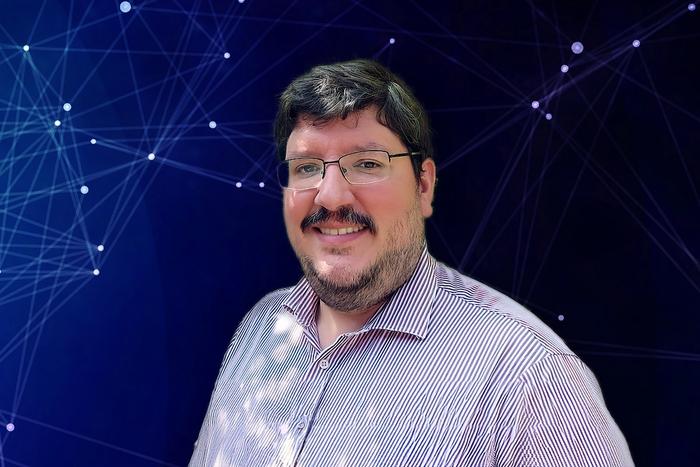Felix Parra Diaz, the head of the Theory Department at the U.S. Department of Energy’s (DOE) Princeton Plasma Physics Laboratory (PPPL), has been elected a 2023 Fellow of the American Physical Society (APS). This honor recognizes scientists who have helped advance physics by contributing original research, showing how to apply physics to the worlds of science and technology, or exhibiting excellence in physics teaching.

Credit: Kiran Sudarsanan and Elle Starkman / PPPL Office of Communications
Felix Parra Diaz, the head of the Theory Department at the U.S. Department of Energy’s (DOE) Princeton Plasma Physics Laboratory (PPPL), has been elected a 2023 Fellow of the American Physical Society (APS). This honor recognizes scientists who have helped advance physics by contributing original research, showing how to apply physics to the worlds of science and technology, or exhibiting excellence in physics teaching.
Parra Diaz was cited for “transformational contributions to the theory of plasma spontaneous rotation, radiation fronts in plasma exhaust, magnetized sheaths, transport barriers, and stellarator transport.” Each year, no more than one-half of 1% of the APS’s members are named fellows.
“I am very happy to be named an APS Fellow,” Parra Diaz said. “It’s wonderful for your peers to recognize the work you’ve been doing.”
Parra Diaz’s fusion research has focused mainly on what’s known as “transport” — when atomic nuclei and electrons escape from magnetic fields that hold them within doughnut-shaped tokamaks and twisty stellarators. Scientists worldwide are using these fusion devices to confine plasma, the electrically charged fourth state of matter that makes up 99% of the visible universe, to harness fusion reactions that could make electricity without producing greenhouse gases or long-lived radioactive waste.
Parra Diaz began his position at PPPL in October 2021 and is transforming the department with a modern mission and vision. Scientists in the Theory Department try to describe the behavior of plasma using mathematical equations. “This task requires both creativity and mathematical rigor,” Parra Diaz said. “The equations of plasma physics allow us to understand the visible universe and help increase the efficiency of plasma devices ranging from fusion machines to facilities that fabricate microchips.”
Parra Diaz is also helping develop a new strategy for the department that advances the priorities of both PPPL and the DOE and supports a research program that fosters collaboration. The department has been reorganized to promote a sense of shared responsibility for the department’s mission and health; changes including instituting rotating leadership positions and new discussion forums.
Parra Diaz oversees 30 full-time staff members in the Laboratory’s Theory Department. He has authored or co-authored more than 100 high-profile papers and invited talks on plasma physics.
He earned his bachelor’s degree in aeronautical engineering with a specialization in propulsion from the Polytechnic University of Madrid. He received his doctorate from the Massachusetts Institute of Technology (MIT) in 2009, and his dissertation won the prestigious Marshall N. Rosenbluth Outstanding Thesis Award.
Parra Diaz spent two years as a postdoctoral researcher at the University of Oxford and then became an assistant professor at MIT in 2011, where he won a DOE Early Career Award. He moved back to Oxford, England to take an associate professor position in 2013 and was named a full professor in 2019. There, he won the Best Young Theoretical Physicist Award of the Spanish Royal Physics Society.
Parra Diaz enjoys studying fusion because it combines the practical with the theoretical. “I love the combination of impact — how important fusion could be for the world — and the detailed physics you have to do to make that happen,” he said.
PPPL, on Princeton University’s Forrestal Campus in Plainsboro, N.J., is devoted to creating new knowledge about the physics of plasmas — ultra-hot, charged gases — and to developing practical solutions for the creation of fusion energy. The Laboratory is managed by the University for the U.S. Department of Energy’s Office of Science, which is the single largest supporter of basic research in the physical sciences in the United States and is working to address some of the most pressing challenges of our time. For more information, visit https://energy.gov/science




